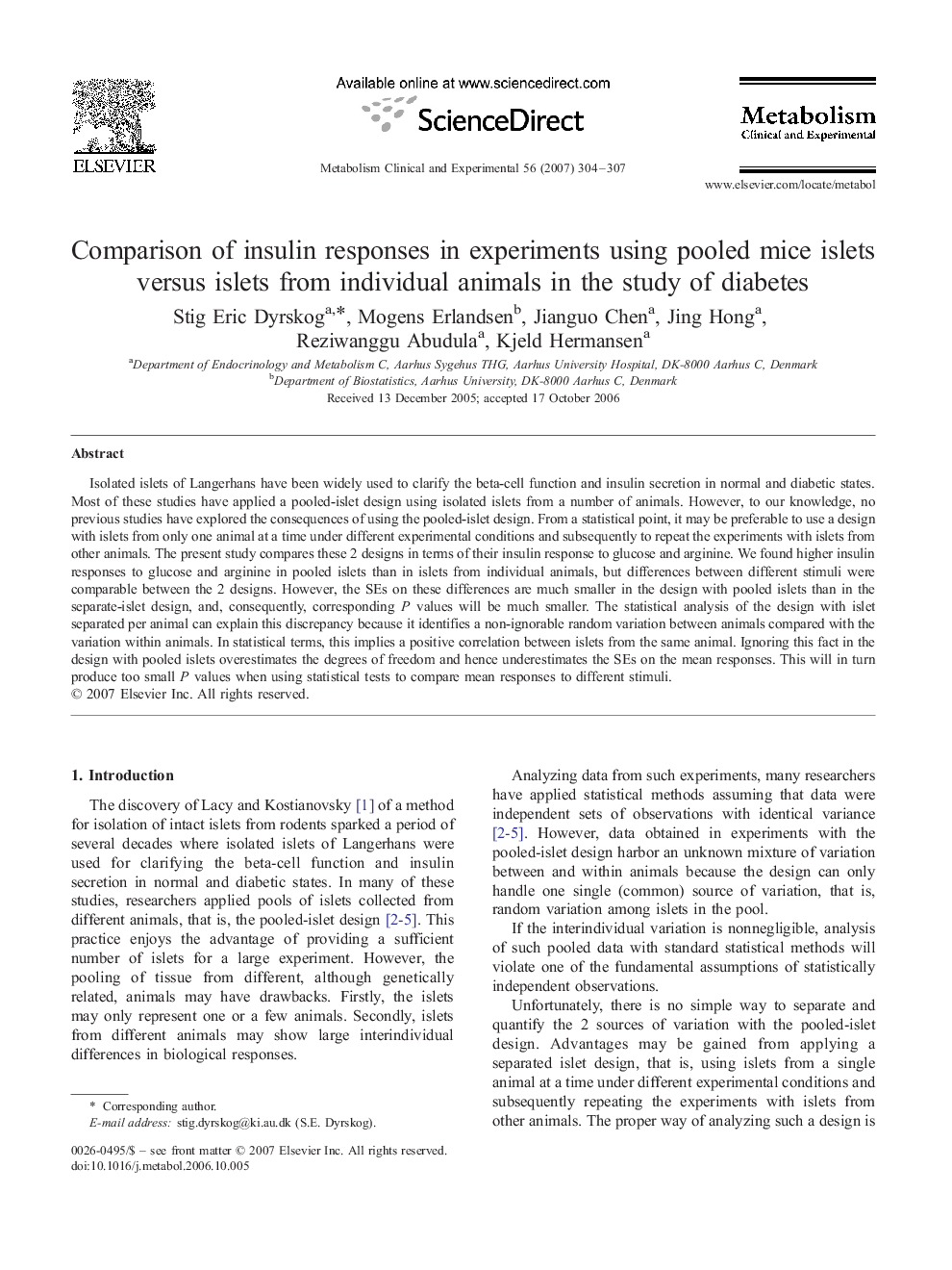| Article ID | Journal | Published Year | Pages | File Type |
|---|---|---|---|---|
| 2807474 | Metabolism | 2007 | 4 Pages |
Isolated islets of Langerhans have been widely used to clarify the beta-cell function and insulin secretion in normal and diabetic states. Most of these studies have applied a pooled-islet design using isolated islets from a number of animals. However, to our knowledge, no previous studies have explored the consequences of using the pooled-islet design. From a statistical point, it may be preferable to use a design with islets from only one animal at a time under different experimental conditions and subsequently to repeat the experiments with islets from other animals. The present study compares these 2 designs in terms of their insulin response to glucose and arginine. We found higher insulin responses to glucose and arginine in pooled islets than in islets from individual animals, but differences between different stimuli were comparable between the 2 designs. However, the SEs on these differences are much smaller in the design with pooled islets than in the separate-islet design, and, consequently, corresponding P values will be much smaller. The statistical analysis of the design with islet separated per animal can explain this discrepancy because it identifies a non-ignorable random variation between animals compared with the variation within animals. In statistical terms, this implies a positive correlation between islets from the same animal. Ignoring this fact in the design with pooled islets overestimates the degrees of freedom and hence underestimates the SEs on the mean responses. This will in turn produce too small P values when using statistical tests to compare mean responses to different stimuli.
